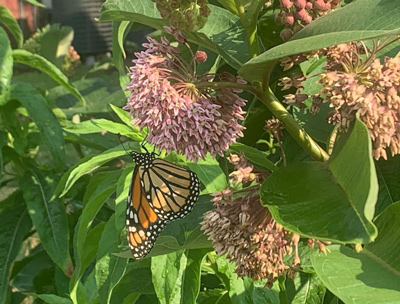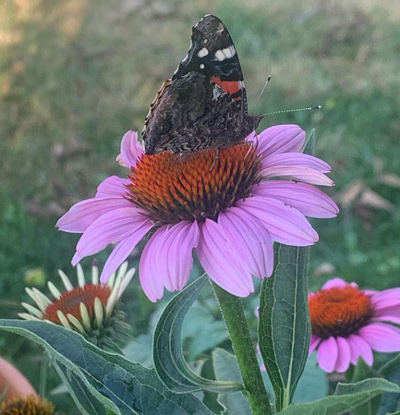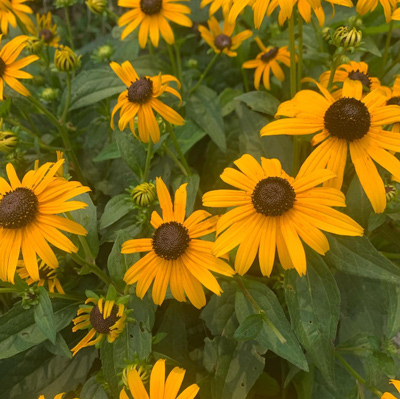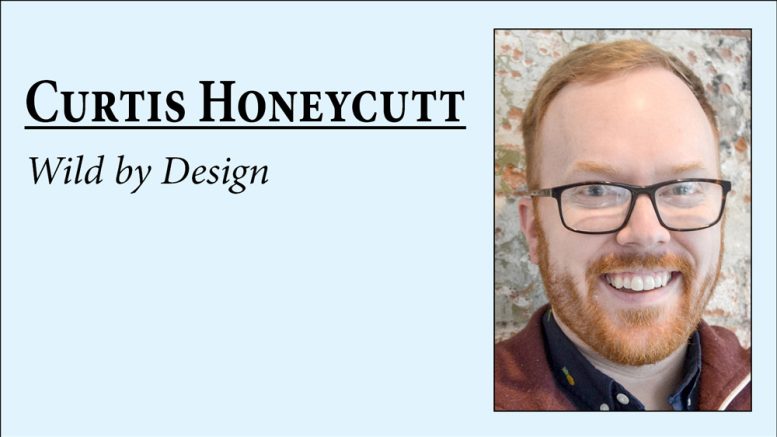Do you want your home garden to attract pollinators? Fuzzy bumblebees? Gorgeous butterflies? Of course you do! The best way to do this is by planting native plants.
Native plants and pollinators have codeveloped over eons to create a mutually beneficial relationship. If you’re looking to create a welcoming environment for our fluttering friends, you won’t get many visitors with non-native plants.

The common milkweed. (Photo provided by Curtis Honeycutt)
For instance: do you want to attract monarch butterflies to your home landscape? Easy – plant some brilliant orange butterfly weed (Asclepias tuberosa). It will look great in any suburban garden bed. Monarchs only lay their eggs on milkweed leaves, and monarch caterpillars exclusively eat milkweed. Other native milkweed species to consider include swamp milkweed, purple milkweed, and common milkweed. If you plant milkweed, you’ll get monarchs. And, by the way, they need your help!
If you’re looking for some other ways to establish native plants in your landscape, but aren’t sure where to start, here are some attractive, no-nonsense plants to try. They are adapted to the local climate and soil conditions, requiring less maintenance than non-natives.

The purple coneflower. (Photo provided by Curtis Honeycutt)
One native flower we see all the time in central Indiana is purple coneflower (Echinacea purpurea). It thrives in full sun and well-drained soil. Once established, purple coneflower is drought tolerant and requires minimal watering. It blooms from mid-summer to late summer, providing a long season of bright purple color in your garden. The daisy-like flowers with prominent central cones add a touch of prairie charm to any landscape. Purple coneflower will attract bees, butterflies and even an occasional hummingbird.
Black-eyed Susan (Rudbeckia hirta) is another classic wildflower that thrives in Hamilton County home gardens. Here’s why it should be a top contender for your planting list. Black-eyed Susan is a cheerful, daisy-like wildflower, featuring bright yellow petals with a dark brown center to create a vibrant display throughout the summer and into fall. This easy-going wildflower readily self-seeds, potentially expanding your floral display without much effort on your part. Its abundant nectar and pollen provide a valuable food source for pollinators, supporting the local ecosystem while adding beauty to your garden.

The Black-eyed Susan. (Photo provided by Curtis Honeycutt)
Dense blazing star (Liatris spicata) adds a unique and striking element to any home garden. Despite its striking appearance, dense blazing star is a low-maintenance plant. It prefers full sun and well-drained soil, tolerating drought well once established. Dense blazing star grows in a tall, slender form with vibrant purple flowers that bloom in spikes along the stalk. The star of the show – the flowers – bloom from mid to late summer, offering a long season of interest in your garden. Dense blazing star’s vertical element adds a distinctive touch to borders and beds, helping to break up horizontal lines. Its flowers are a magnet for butterflies, bees, and other pollinators, creating a buzz of activity in your garden.
Those are just a few “classic” full-sun native plants that will not only look great, but thrive, in your home garden. These flowers will attract butterflies and beneficial bees to your yard. However, if you spray your yard and beds with pesticides or hire a mosquito fogging service to blanket your outdoor areas with chemicals, nearly all insect life will die out. If we want to encourage winged visitors, we simply can’t spray harmful chemicals. There’s really no way to sugarcoat that message.
The primary question I get is: where can I buy these plants? Since I am still unfamiliar with our area nurseries, I won’t comment on them other than saying if you are seeking out native plants from local nurseries, try your best to select straight-species natives as opposed to a hybrids. Hybrids will generally have a flashy name in quotes after the species name (e.g., Echinacea ‘Pixie Meadowbrite’). In general, as straight native species have codeveloped with native insects, they do the best job of giving native insects the exact food they need.
Finding native plants at a big box store like Lowe’s or Home Depot is like finding a needle in a haystack; when/if you do, there’s a high probability the plant has been sprayed with harmful chemicals. Pesticides are designed to kill insects, and this includes both harmful pests and beneficial pollinators like bees, butterflies, and hummingbirds.
I encourage you to visit Native Plants Unlimited at Geist Nursery in Fishers. Its spring sale starts on Friday, May 10. You’ll find scores of native plant species, including the ones I mentioned above, along with an incredibly helpful, knowledgeable staff. Buy multiples of each flower (three to five) and plant them in a mass to create a spectacular, natural summer fireworks display.
If you plant native plants, beneficial pollinators will come. Together, we can create a vibrant world for these essential creatures, right in our own backyards.
Curtis Honeycutt is a Noblesville-based columnist and author. Send him your questions, comments and suggestions at curtis@curtishoneycutt.com.

Photo provided by Curtis Honeycutt


Be the first to comment on "If you plant it, they will come"